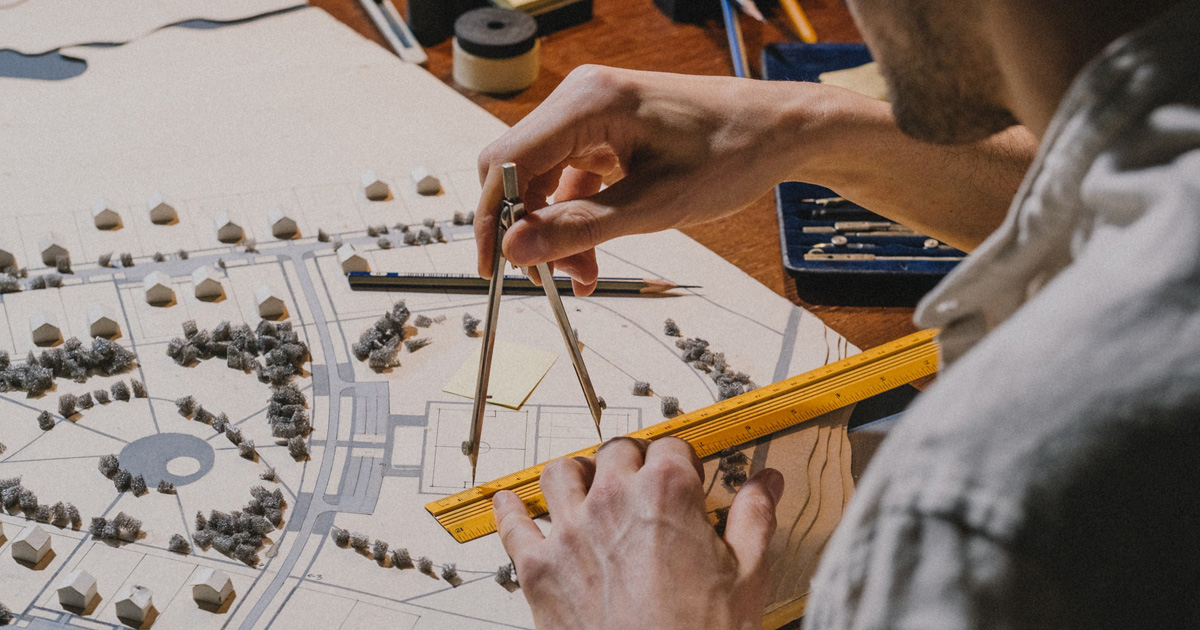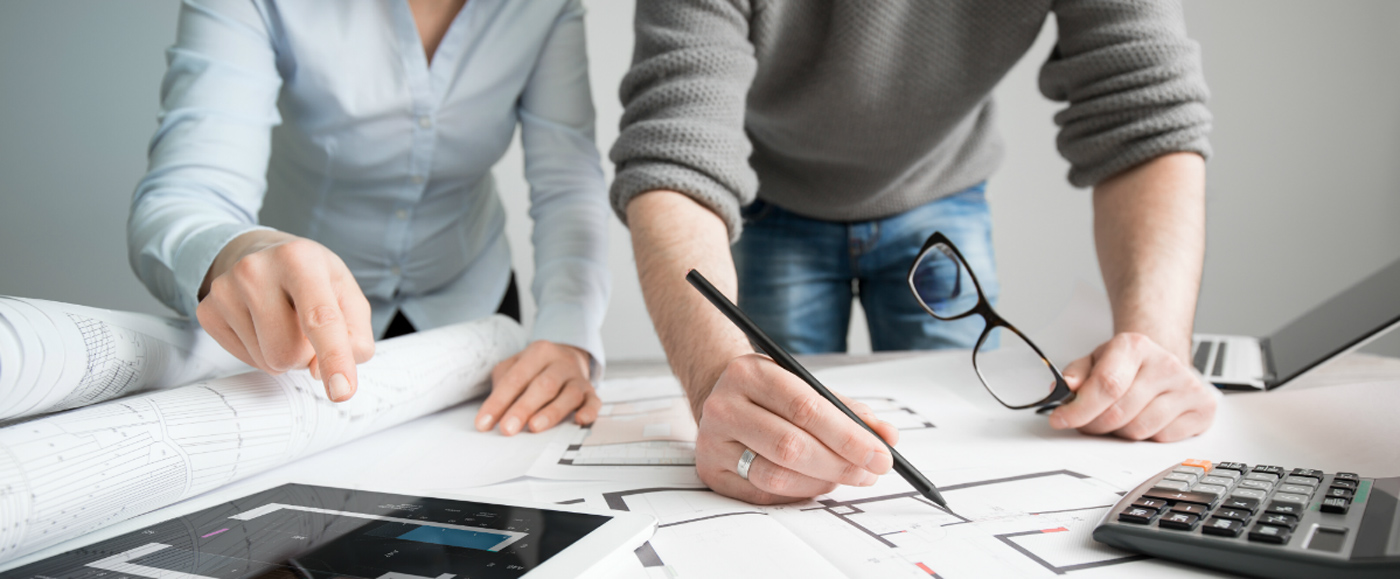Architect Advice on Optimizing Compact Urban Spaces
Architect Advice on Optimizing Compact Urban Spaces
Blog Article
Comprehending the Diverse Profession Paths Available for Aspiring Architect
As an ambitious Architect, you have a globe of profession paths waiting for you. Each path uses distinct difficulties and chances to use your imagination and technical know-how. Whether you're attracted to traditional design or the nuances of sustainable layout, there's a specific niche that aligns with your rate of interests. Recognizing these varied choices can shape your specialist trip, however which instructions will you choose to explore first?
Traditional Architecture: Designing Structures and buildings
Traditional architecture concentrates on making buildings and structures that blend capability with aesthetic allure. Your styles can mirror social heritage, showcasing regional practices while fulfilling modern requirements.
You'll create abilities in composing, model-making, and site analysis, allowing you to imagine and interact your ideas successfully. Involving with customers, you'll require to understand their vision and equate it right into feasible styles.
Moreover, developing codes and sustainability techniques are vital in your job, ensuring your frameworks are eco pleasant and safe. As you grow in your profession, you'll find chances in residential, business, and even remediation projects, each offering distinct difficulties. Embracing typical design paves the way for a satisfying job that pays tribute to the past while shaping the future.
Urban Planning: Forming Neighborhoods and Public Spaces
As an ambitious Architect, you can play a crucial duty as a city organizer, transforming how areas work and connect. By employing area engagement methods, you'll ensure that locals have a voice in shaping their environment. Plus, integrating lasting style principles will aid develop areas that not only meet today's requirements but likewise safeguard the future.
Duty of Urban Planners
While several might believe of architects as the sole enthusiasts behind structures, urban planners play an essential function in shaping the wider landscape of areas and public areas. By working together with numerous stakeholders, you'll aid make parks, transportation systems, and property locations that promote social interaction and accessibility. Your expertise in spatial design and neighborhood dynamics enables you to envision future development while preserving social heritage.
Community Engagement Techniques
Reliable community interaction approaches are vital for metropolitan planners to ensure that the voices of citizens are heard and valued in the planning procedure. To promote meaningful discussion, you should prioritize open online forums and workshops where area members can reveal their ideas and issues. By proactively listening and including responses, you'll develop rooms that mirror the area's demands, inevitably leading to even more lasting and successful metropolitan atmospheres.
Sustainable Style Concepts
When making metropolitan spaces, including sustainable design concepts is important for creating environments that grow both environmentally and socially. Think about integrating environment-friendly rooms, like parks and yards, to enhance biodiversity and enhance air quality.
Creating with water preservation in mind is likewise key-- consider rain yards and permeable surface areas to handle stormwater. Entailing area members throughout the preparation process warranties that the areas you develop satisfy their demands and motivate social communication. By embracing these concepts, you'll add to dynamic, lasting urban landscapes that profit everyone.

Landscape Style: Developing Sustainable Outdoor Settings
As you check out landscape architecture, you'll discover crucial style concepts that create gorgeous and useful exterior areas. Sustainable techniques play a crucial role in guaranteeing these settings flourish while minimizing ecological impact. And also, you'll find a selection of profession possibilities that enable you to make a real distinction in how individuals engage with nature.
Style Principles in Landscape
Recognizing style concepts in landscape architecture is necessary for creating lasting outdoor settings that harmonize with nature. You'll require to ponder elements like range, percentage, and balance to assure your designs really feel natural and welcoming. Incorporating native plants not just boosts biodiversity but likewise lowers water use, making your landscape resilient. Think of the circulation of space and how people engage with it; paths and seating locations ought to welcome expedition and leisure. Additionally, pay interest to seasonal adjustments, designing with materials that match the surroundings year-round (Architect). By focusing on sustainability and appearances, you can create outdoor areas that enhance the area and advertise health. Embracing these concepts will certainly establish a solid structure for your job in landscape style.
Lasting Practices Review
Sustainable methods in landscape style not only focus on visual appeals however additionally prioritize environmental wellness and resource conservation. You can create rooms that promote dirt health, such as utilizing organic materials and exercising permaculture principles. Eventually, these methods assure your layouts profit both individuals and the setting for years to come.
Career Opportunities Exploration
With a strong foundation in lasting methods, landscape architecture offers a selection of occupation courses that enable you to make a purposeful influence on the setting. Urban coordinators typically collaborate with landscape engineers to create eco-friendly rooms in urban setups, improving city livability. If you're passionate concerning education, consider coming to be a landscape style teacher, inspiring future generations.
Lasting Layout: Concentrating on Eco-Friendly Practices
As you explore your job in design, welcoming eco-friendly methods can establish you apart in a competitive area. Lasting style concentrates on creating structures that minimize environmental influence while enhancing passenger health. By integrating eco-friendly products, energy-efficient systems, and lasting structure methods, you'll add to a greener future.
Start by getting expertise of green qualifications like LEED or BREEAM, which can bolster your qualifications. Take into consideration how natural light, air flow, and thermal efficiency can enhance layout. Collaborate with engineers and environmental experts to introduce remedies that reduce waste and conserve resources.
Don't fail to remember the relevance of area participation-- engaging local stakeholders can influence styles that integrate with the setting. As customers increasingly prioritize sustainability, your competence in eco-friendly practices will not just attract projects but likewise meet your interest for accountable style. Welcome this crucial aspect of the profession, and view your profession grow.
Historic Preservation: Securing and Restoring Cultural Heritage
While you begin on your building trip, think about the essential function of historic preservation in preserving our cultural heritage. This area concentrates on the security and restoration of considerable buildings, websites, and structures that tell the tales of our past. By participating in historical conservation, you'll assist secure the building legacy that forms community identification.
As a historical preservation Architect, you'll examine historical importance and assess the condition of structures. You'll function very closely with guardians and chroniclers to assure authentic restoration techniques are utilized. This occupation course permits you to mix imagination with research, allowing you to create remedies that appreciate original products and workmanship.
Your work not only contributes to sustainability by recycling existing structures yet also promotes a feeling of pride within neighborhoods. Accepting this course will certainly assist you become a guardian of background, protecting the tales and aesthetic appeals that improve our lives.
Inside Architecture: Enhancing Indoor Spaces
Historic preservation and indoor style both share a commitment to improving the constructed setting, yet they focus on various facets. While historic conservation highlights preserving a framework's cultural and historic value, interior design zeroes in on optimizing indoor spaces for functionality and appearances.
As an ambitious Architect, you'll locate that interior architecture allows you to mix imagination with technological skills. You'll make areas that not only look excellent but likewise promote comfort and performance. This area involves understanding exactly how light, color, and materials connect within a space, affecting mood and usability.
You'll service various projects, from domestic homes to industrial offices, guaranteeing that each atmosphere meets the needs of its occupants. By prioritizing user experience, you can change insides into functional and inspiring spaces, making a considerable influence on how individuals connect with their environments. Accept the opportunity to boost interior atmospheres and shape the means individuals live and work.
Industrial Layout: Combining Performance With Looks
Industrial style plays a necessary function in creating items that effortlessly blend aesthetics with capability, making sure that what you use day-to-day is not only visually appealing however also sensible. As a hopeful Architect, you might immerse on your own in this area, concentrating on making every little thing from Related Site furniture to customer electronics. Your job involves recognizing individual demands, materials, and making processes, permitting you to create innovative remedies that improve day-to-day experiences.
In industrial layout, you'll frequently team up with engineers, marketers, and suppliers, making certain that your layouts are not only attractive but likewise viable. You'll learn to balance kind click site and function, focusing on usability without compromising design. By honing your skills in laying out, 3D modeling, and prototyping, you'll be well-appointed to bring your ideas to life. This profession course supplies a vibrant environment where creativity satisfies usefulness, making it a fulfilling choice for architects interested in forming the products of tomorrow.
Regularly Asked Inquiries
What Educational Certifications Do I Need to End Up Being a Designer?
To end up being a designer, you'll need a professional degree in architecture, commonly a Bachelor's or Master's. In addition, you'll have to complete an internship and pass the Architect Registration Examination to exercise lawfully.
Are There Qualification Needs for Various Building Job Paths?
Yes, there're accreditation requirements for different architectural paths. Architect. You'll require to pass examinations, complete internships, and sometimes seek specialized training, depending on your picked emphasis, like landscape design, metropolitan style, or historical preservation
What Software Program Skills Are Crucial for Designers Today?

How Can I Gain Practical Experience While Examining Architecture?
You can obtain useful experience by interning at building firms, participating in style competitors, volunteering for area jobs, or teaming up with classmates on real-world jobs. These chances boost your skills and construct valuable links in the industry.
What Task Opportunities Exist Outdoors Conventional Style Firms?
You can explore different job chances outside typical architecture firms, like city planning, interior style, landscape style, construction administration, realty development, or perhaps duties in sustainability consulting. Each deals distinct difficulties and incentives.
Whether you're attracted to traditional design or the subtleties of lasting layout, there's a niche that lines up with your passions.When making urban spaces, integrating lasting style concepts is crucial for producing atmospheres that prosper both environmentally and socially.As you explore landscape architecture, you'll discover vital layout concepts that develop functional and stunning outside areas.Recognizing layout concepts in landscape style is crucial for producing lasting outdoor settings that harmonize with nature.In industrial style, you'll usually collaborate with makers, engineers, and online marketers, making top article sure that your styles are not only gorgeous but additionally feasible.
Report this page